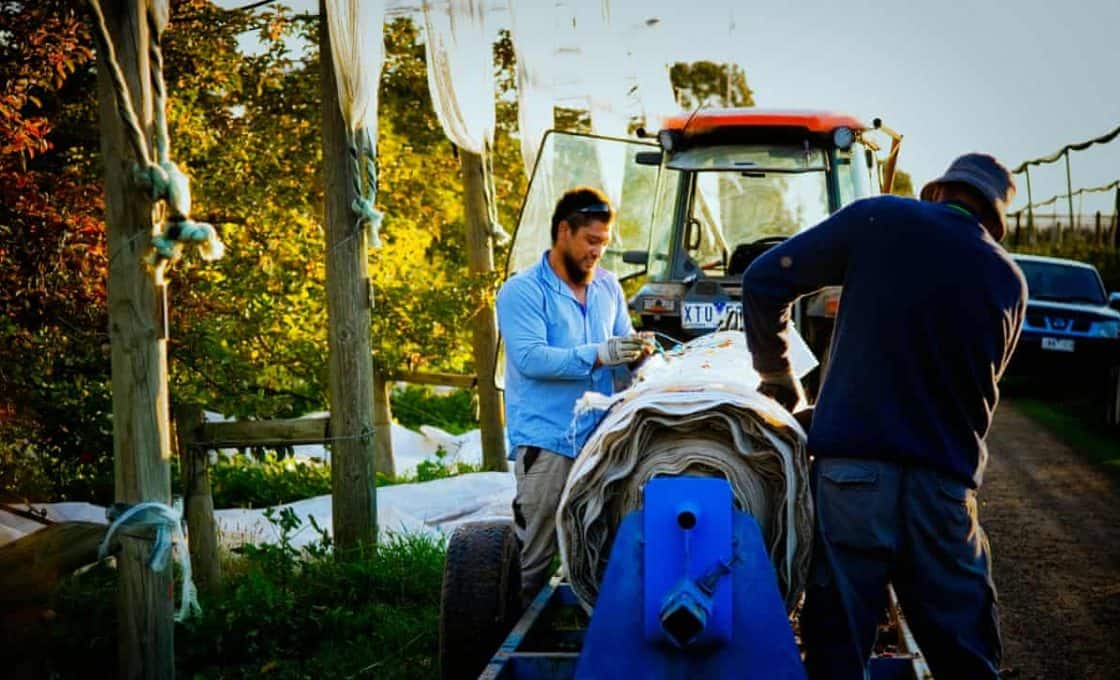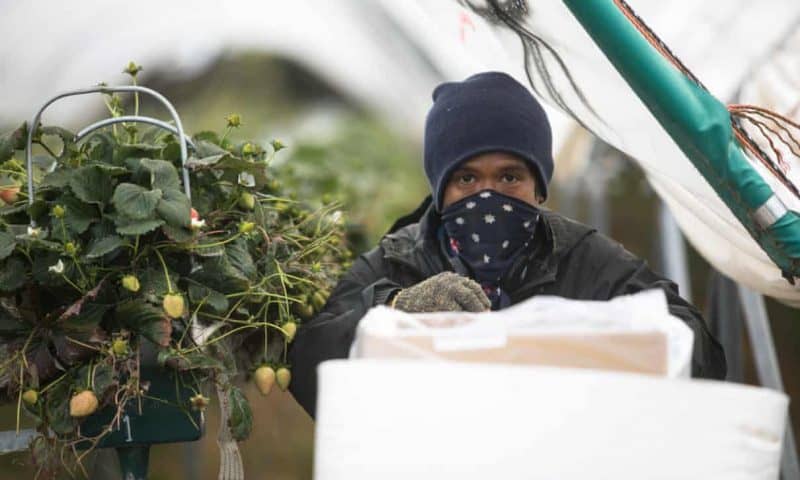With not enough workers to pick the upcoming harvest, Australia faces potential food shortages, and its farmers face economic devastation
As Victoria’s Covid-19 outbreak threatens to spiral out of control and beyond its borders, Australia faces another pandemic-related crisis.
We are sailing into a food shortage and few are talking about it. This needs to change.
In essence the issue is this: a large proportion of Australia’s harvest labour is done by people from abroad who are unable to travel. As the months tick down towards the summer harvest there are simply not enough people to pick the fruit.
If this doesn’t change the result is likely to be shortages and price rises for horticultural products and, even more seriously, devastating hardship for our primary producers.
There are solutions within our reach, if we act in time, but with each week that goes get by achieving them will be harder.
Each year, at the peak of the harvest, Australia needs about 40,000 people to get its fruit and vegetables picked.
In the 12 months to the end of March 2020 about 32,000 of these were backpackers doing the 88 days of farm work required to become eligible to stay another year in Australia.
In roughly the same period, some 8,000 seasonal workers from the Pacific and Timor-Leste were working in Australia as part of the seasonal worker program.
There is also a sizeable mostly-off-the-books workforce, often people on various sorts of student or humanitarian visas, as well as a relatively small cohort of professional pickers from Australia and New Zealand.
Though these numbers are fuzzy, in the context of our current predicament their meaning is not.
Many of the backpackers will have left ahead of the borders being closed. Of the remainder, running low on funds and missing their families, many will leave as soon as they can. Certainly more will not be coming any time soon.
How many will be left is unknown, but it will be a lot fewer than 32,000.
The situation with the seasonal workers is less clear. There are fewer than 7,000 still in the country, largely people who were working on six-month contracts when the borders shut.
Like the backpackers their visas have been extended by 12 months, but also like the backpackers, many will be keen to return home as soon as flights are available and borders are open.
Clearly, if nothing is done, a labour shortage on Australian farms going into the summer harvest season is a real possibility.

One solution would be to reactivate and expand the seasonal worker program as a priority.
Germany and Canada have already done this, reopening their borders to seasonal workers, subject to quarantine requirements and enhanced provisions intended to ensure the health and safety of the workers once they arrive.
Such a path would be imminently realistic for Australia.
A group of 200 workers from Vanuatu may be about to get the green light to work in the Northern Territory, according to one minister, and there is widespread support for the idea from both Pacific region governments and workers.
Timor-Leste has upwards of 10,000 people impatiently waiting for the chance to deploy to Australia and has been actively seeking access for some of them.
There are more than enough eager workers to make up the shortfall in backpacker labour, but bringing them here would require bureaucratic flexibility, political will, planning, multilateral consultation and, perhaps most of all, forward planning.
There is no time to waste.
Another benefit of expanding/reopening the program is that it will reduce the level of exploitation in the agricultural workforce.
It is undeniable that rural and regional Australia have an issue with labour. Whether it be for the harvest, or year-round tasks in meat production or fisheries, primary producers are constantly searching for more reliable staff.
The under-payment of backpackers and various sorts of off-the-books labour continues to be rife – the most comprehensive study on this matter so far found that one-third of them get less than the minimum wage.
The program was set up specifically to avoid this type of exploitation and has largely been successful.
A 2017 World Bank report found that most workers were satisfied with their experience: 91% said they would recommend it to others in their village. Another, in 2018, reported on the positive experiences of women within the program. Many workers choose to return again and again.
Comparing the program with other sources of agricultural labour, a University of Adelaide report found that workers were far less likely to be exploited than backpackers, a view seconded by a government taskforce.
While worker exploitation can, unfortunately, never be entirely legislated out of existence, the evidence that the seasonal workers program dramatically reduces it is strong.
Ben Doherty’s reporting on the sad story of Silas Aru from Vanuatu who found himself underfed and underpaid in central Queensland makes for essential reading, but it is significant that when it came to light this case ended up in the federal court.
One of the strengths of the program is that only authorised employers can participate, and authorisations can be removed without any court intervention, a strong incentive for them to play by the rules.
This is very different from the situation with backpackers where there is not even a requirement that the government be informed before they are hired by a farmer.
Reopening the seasonal worker program could be a moment in which the Australia-Pacific partnership comes of age, pointing the direction to a future defined by mutual help rather than development aid.
It needs to be considered a matter of national priority.

